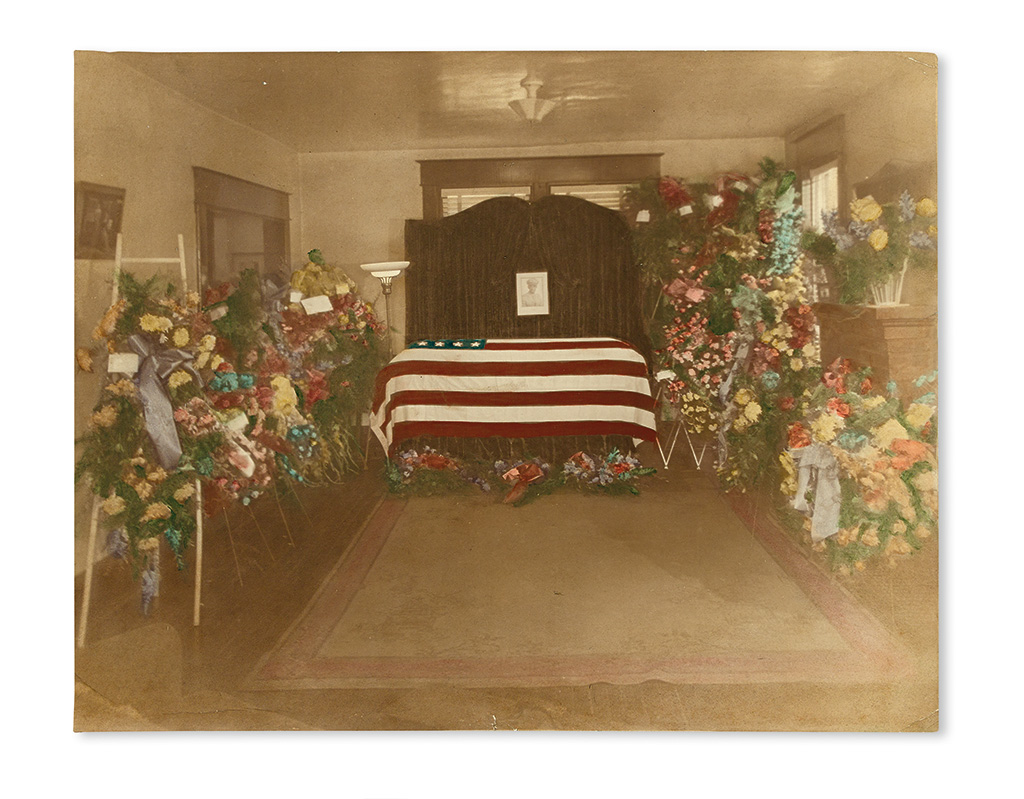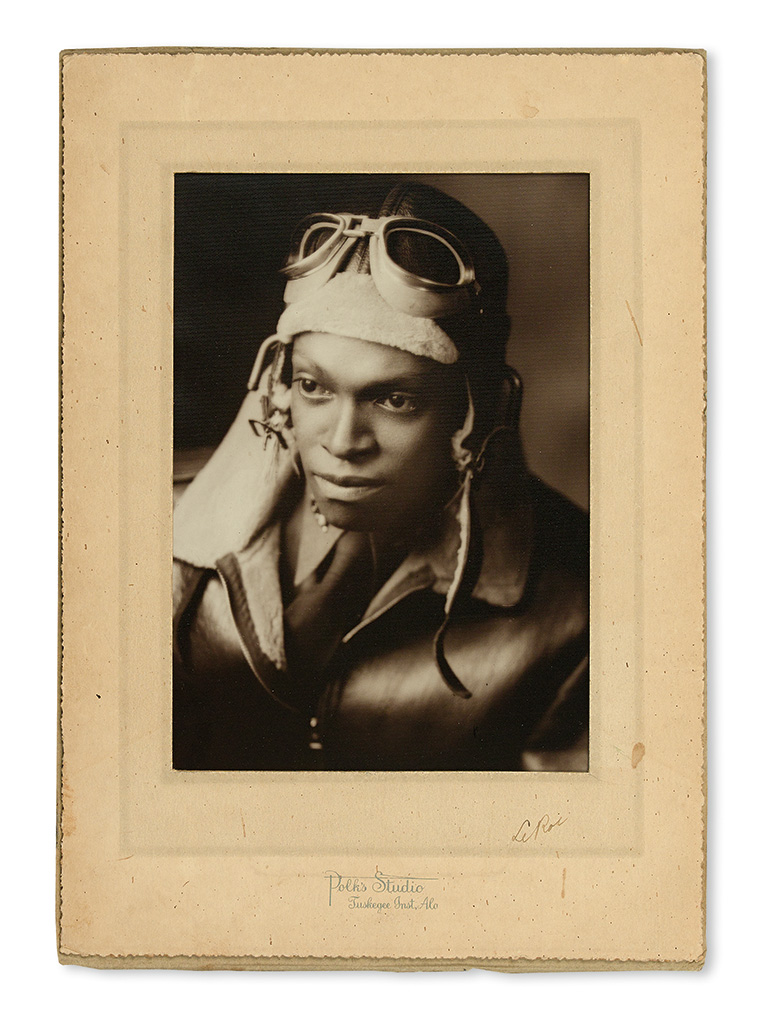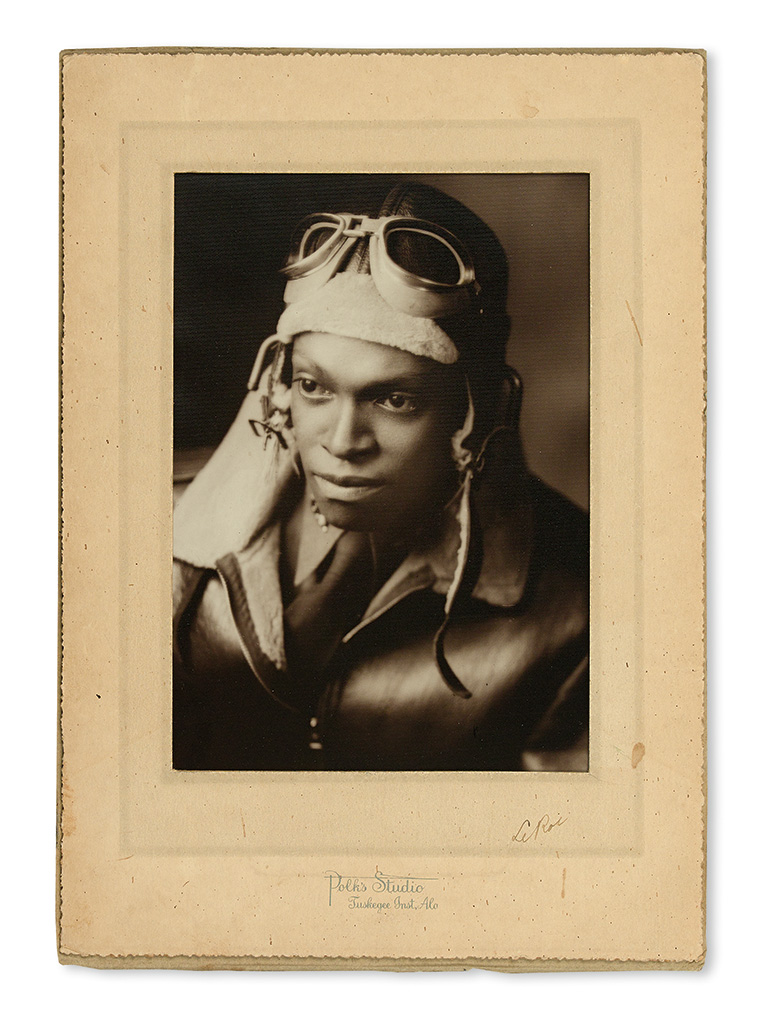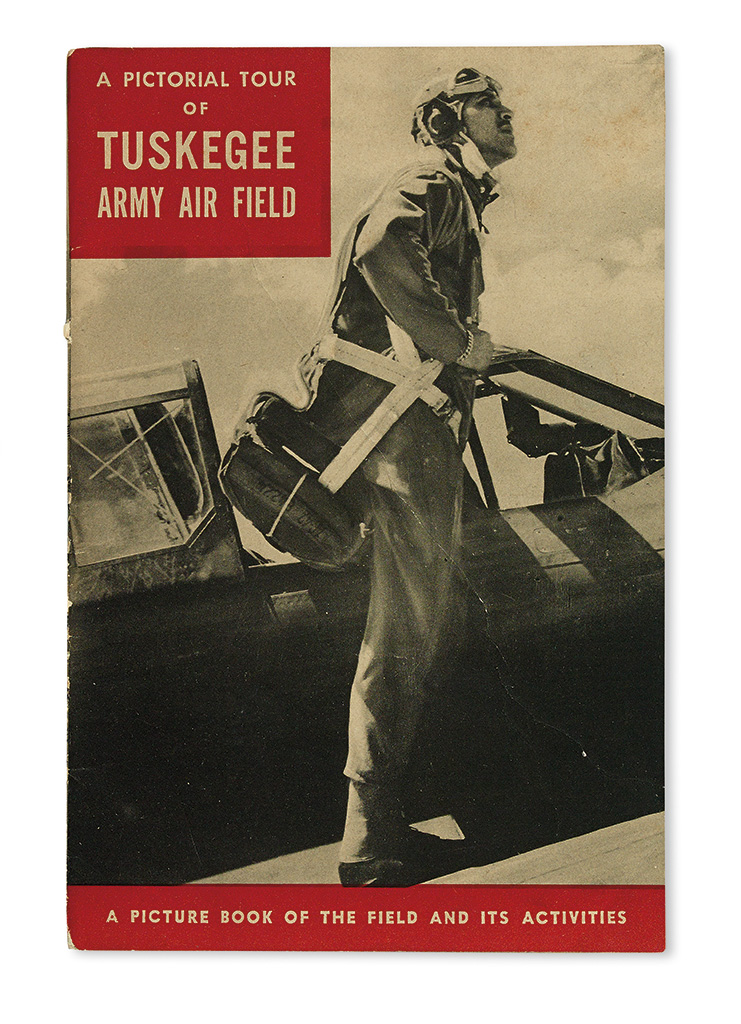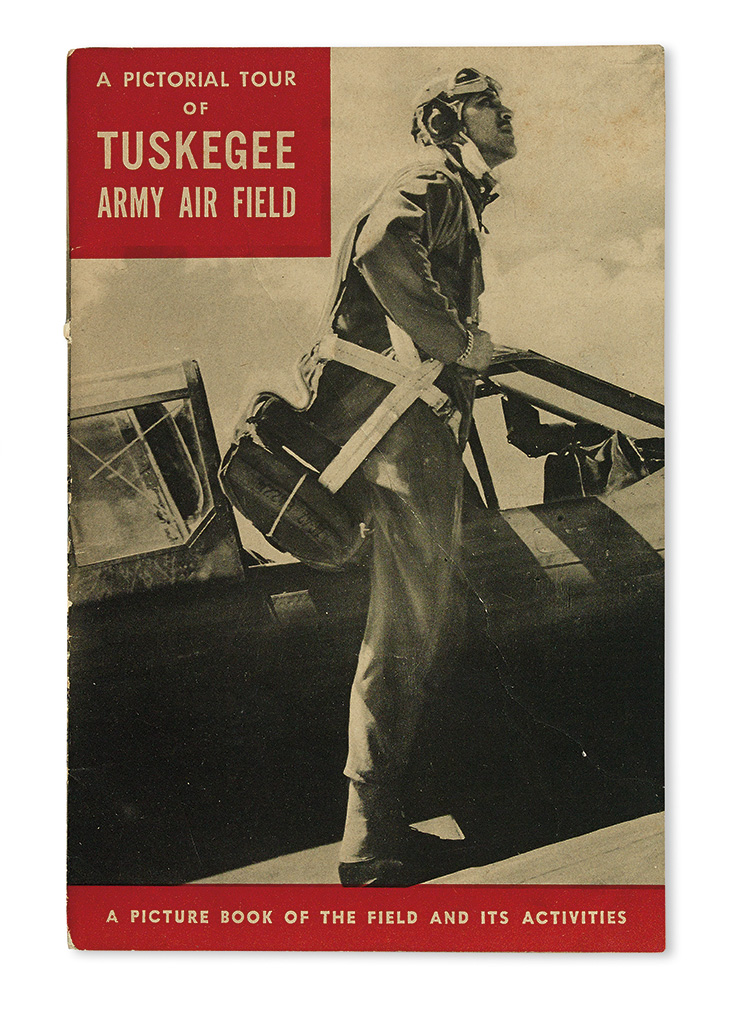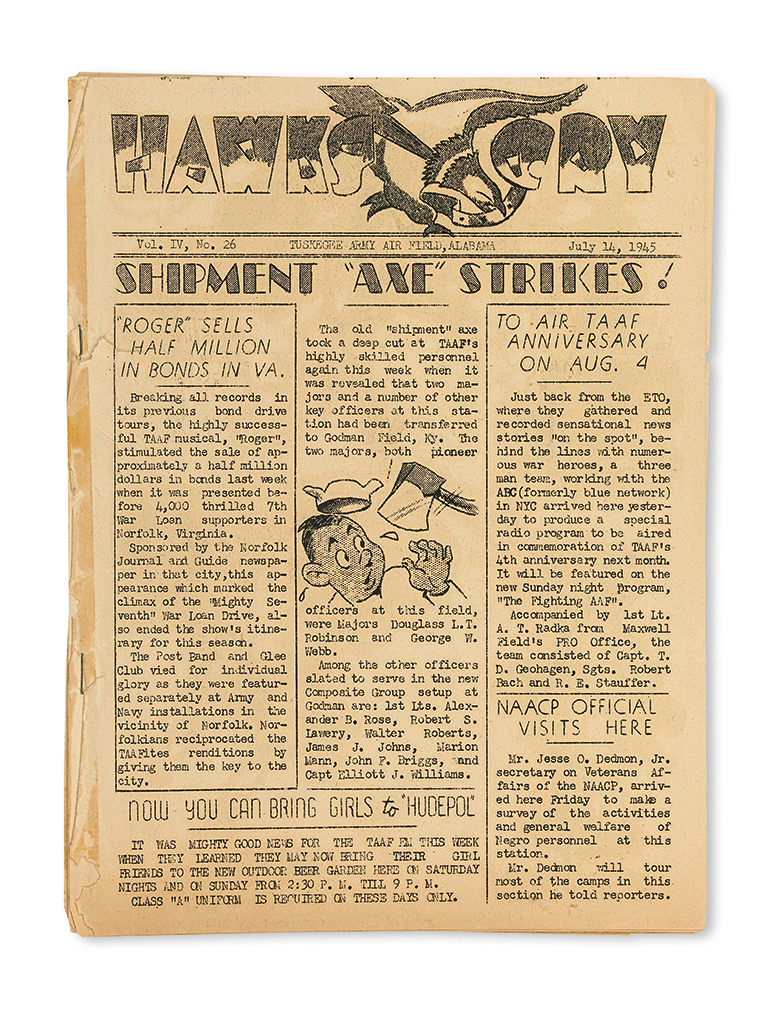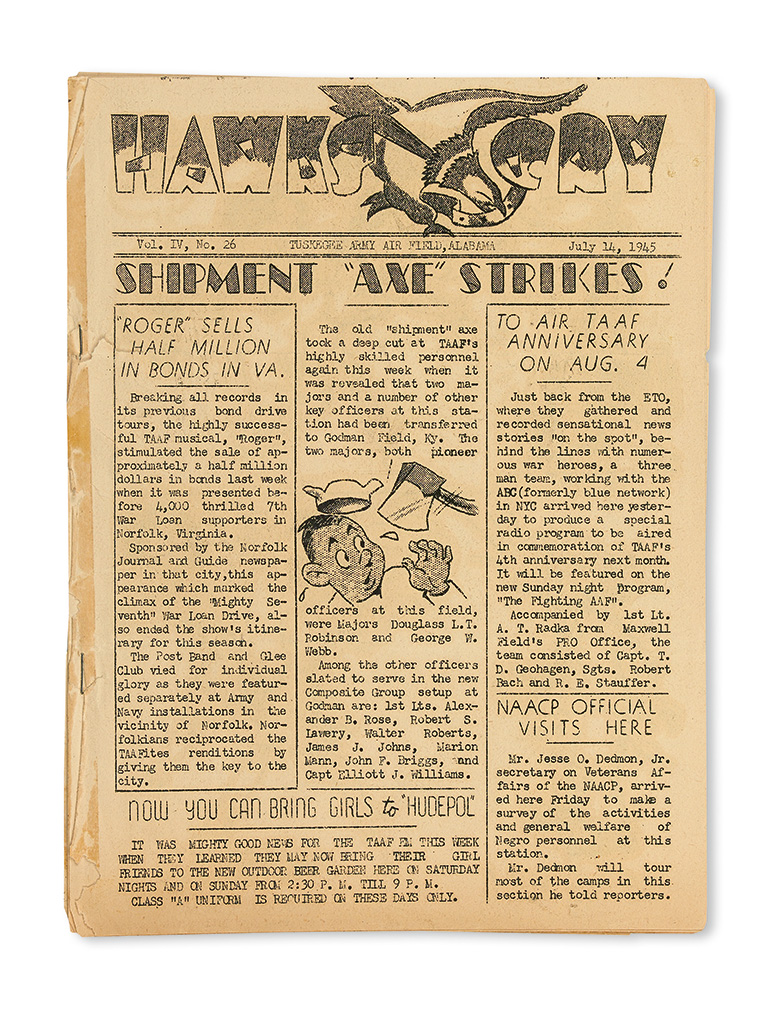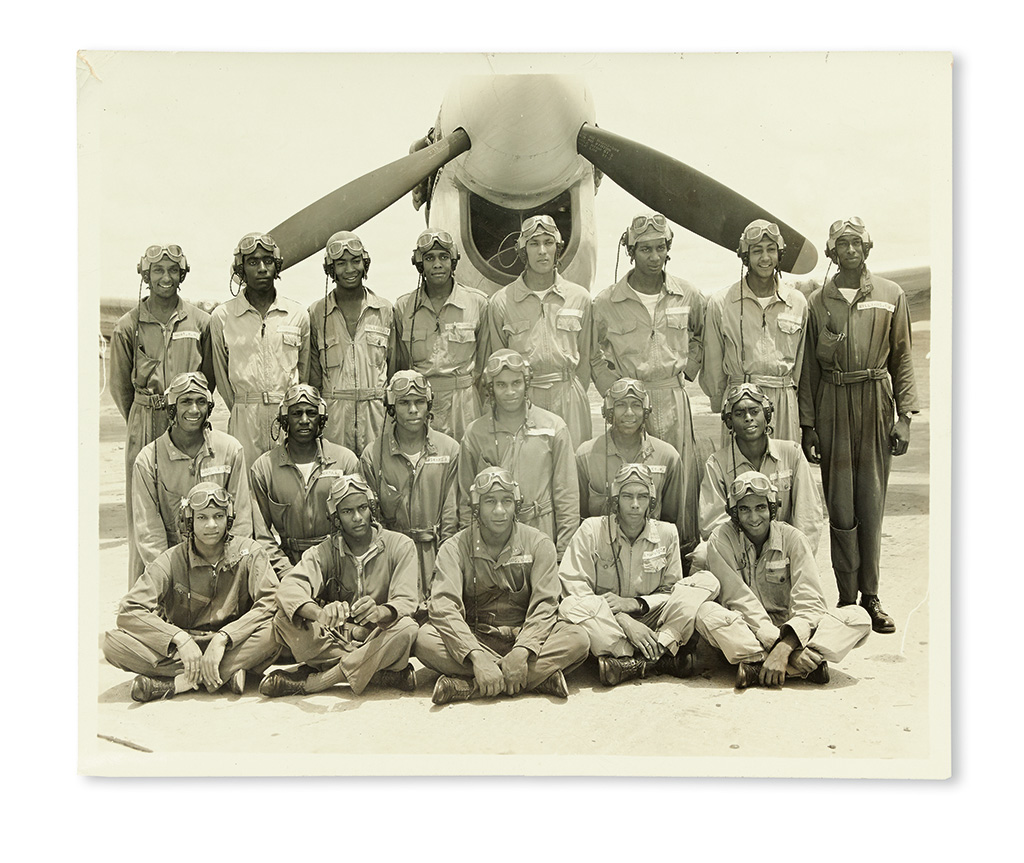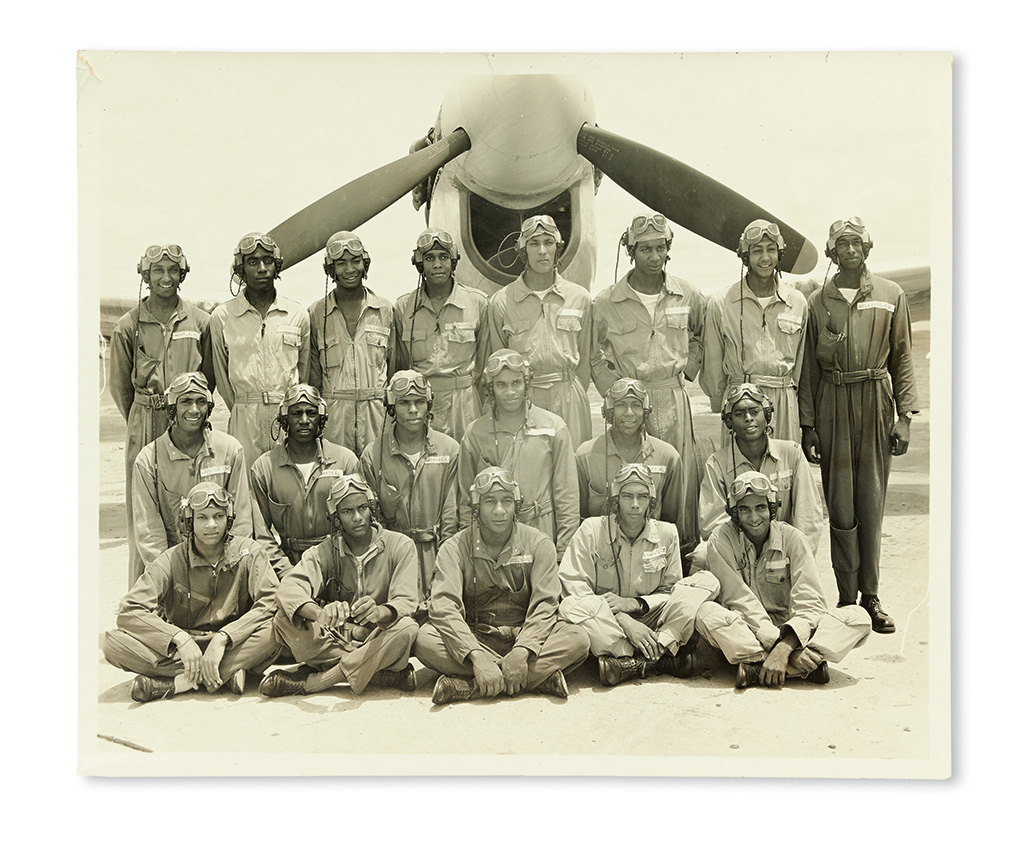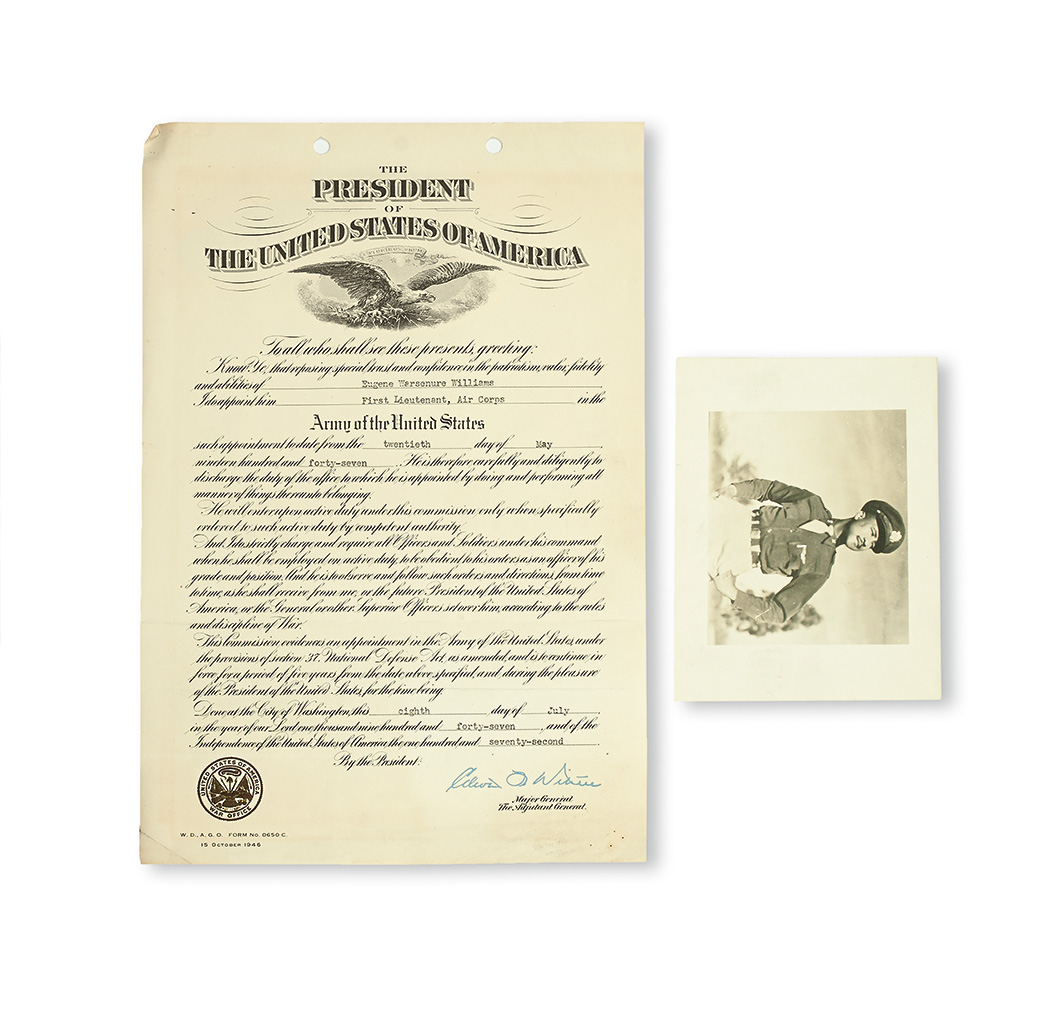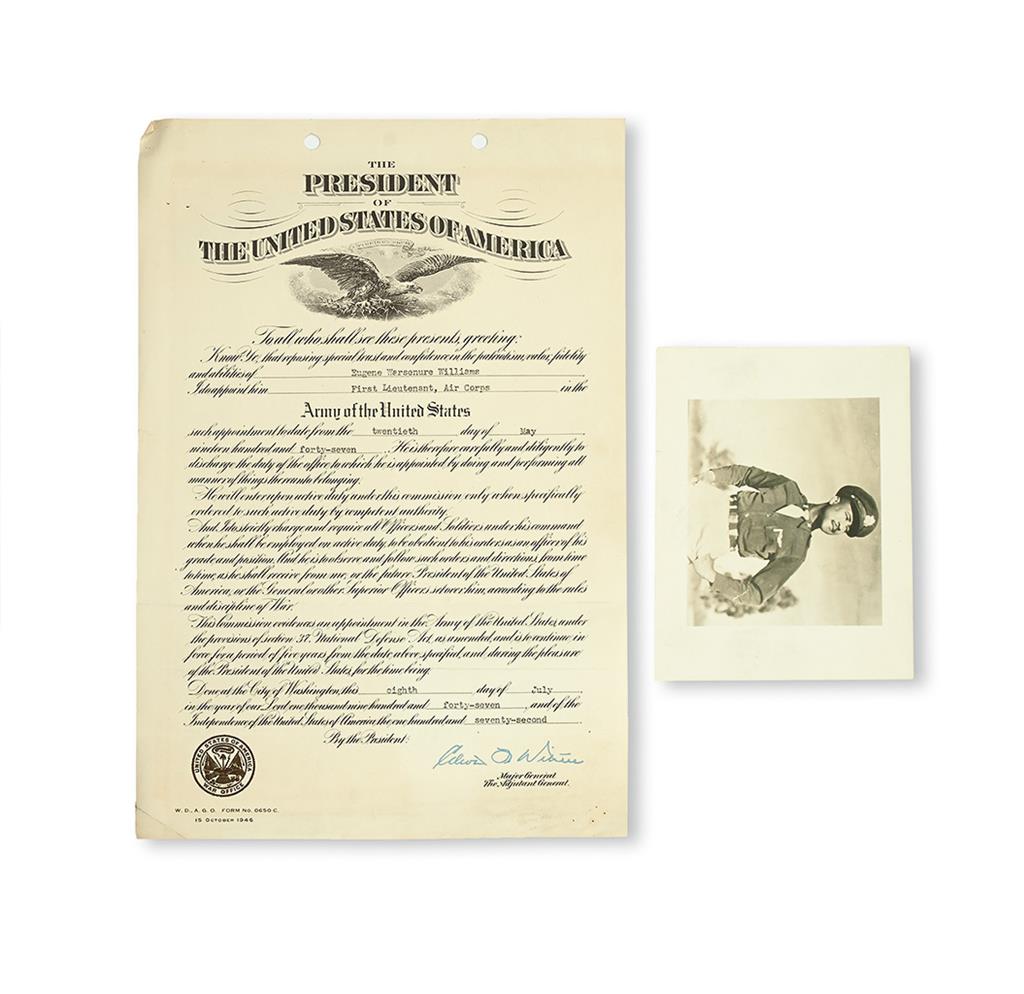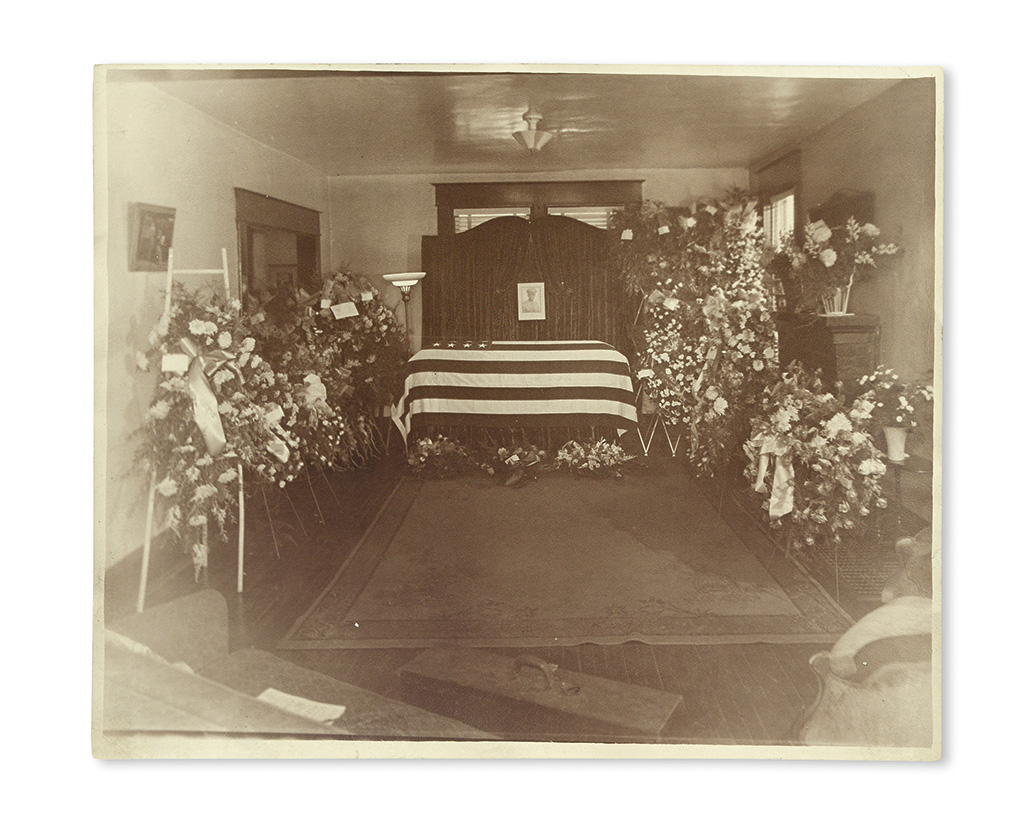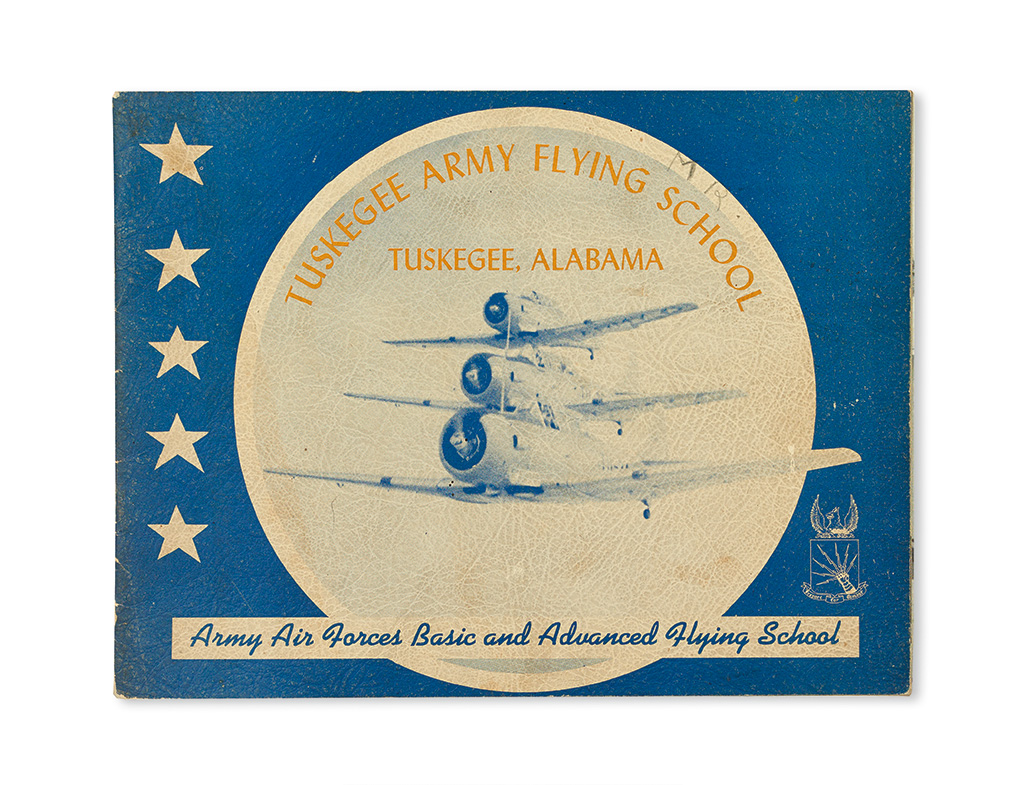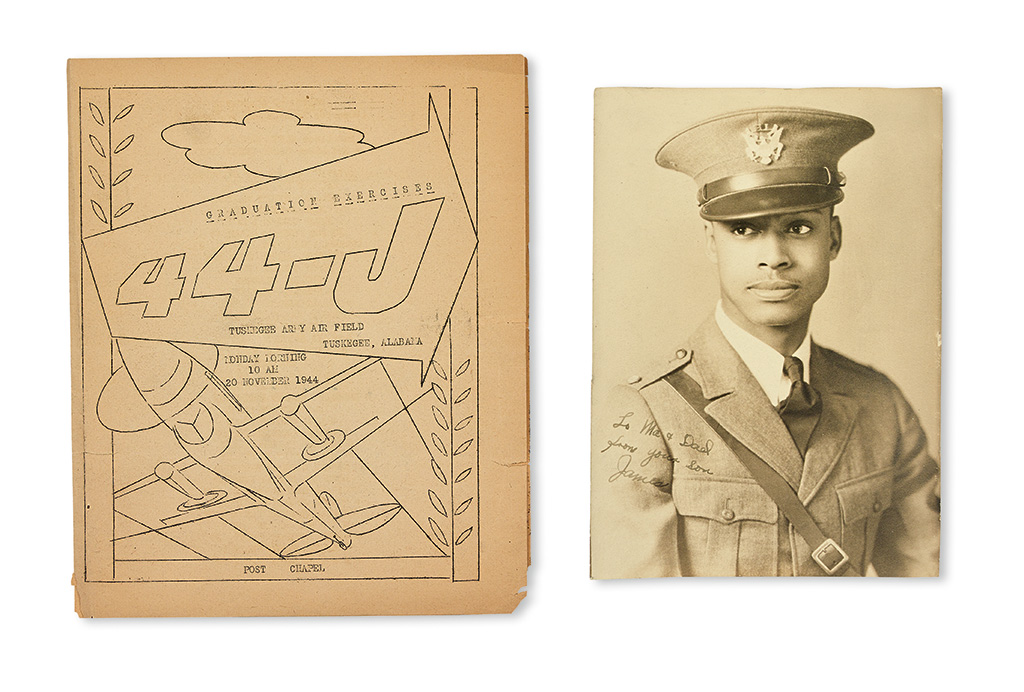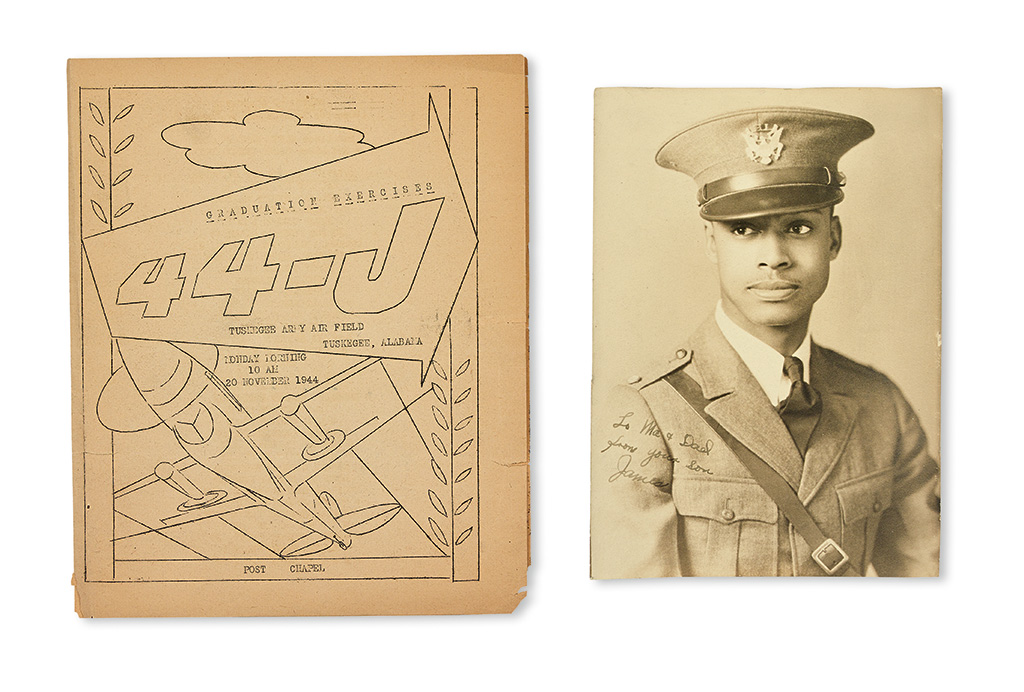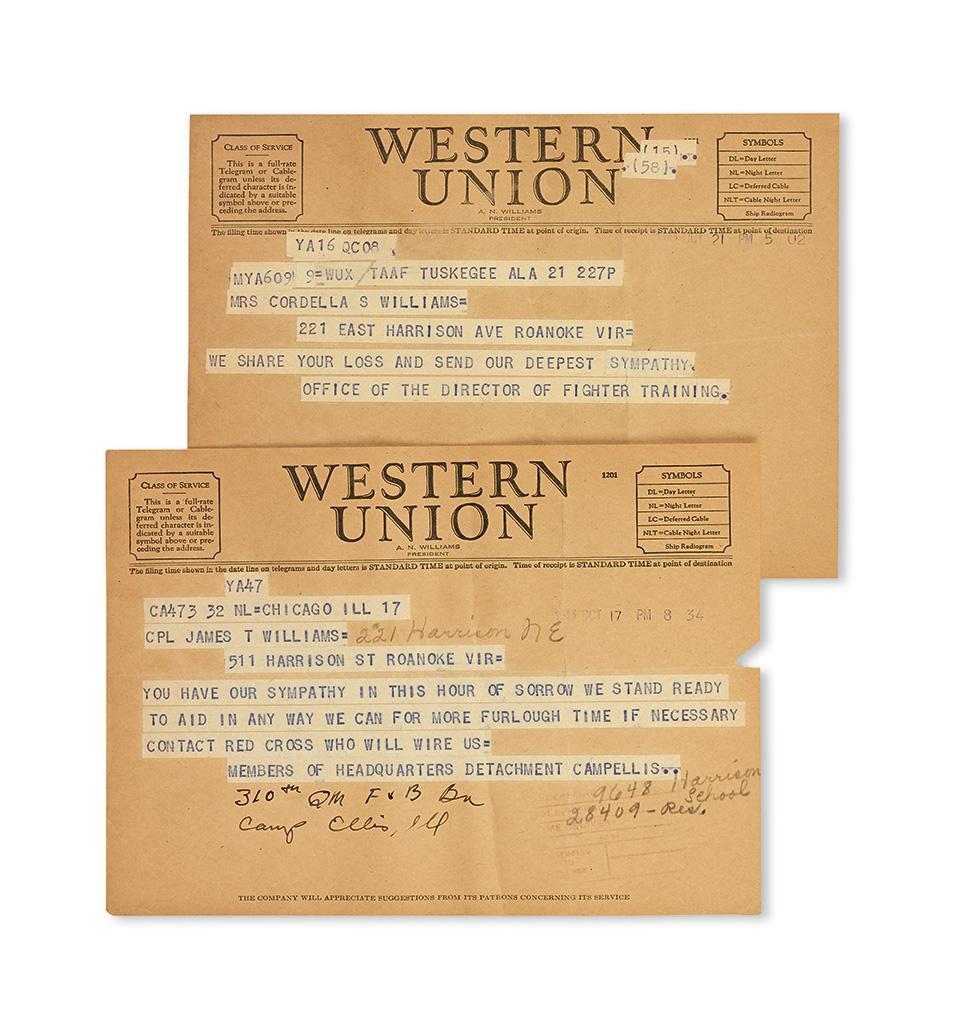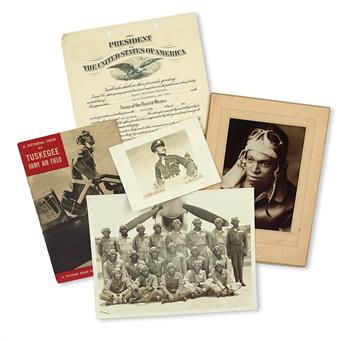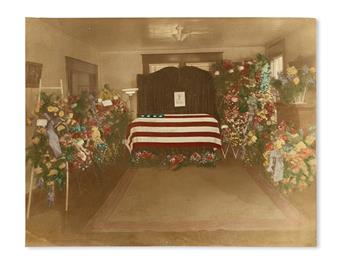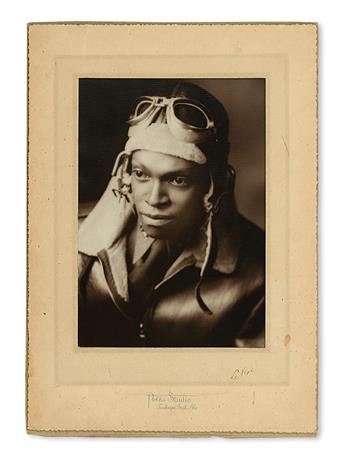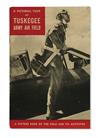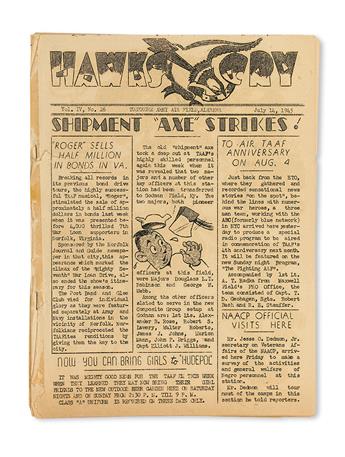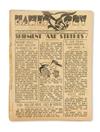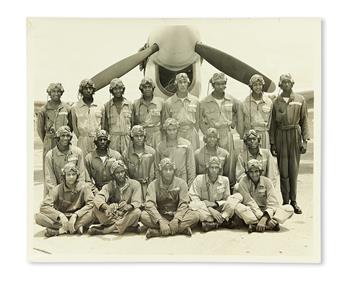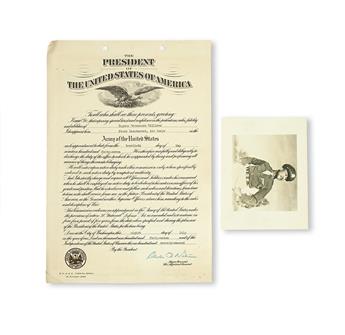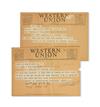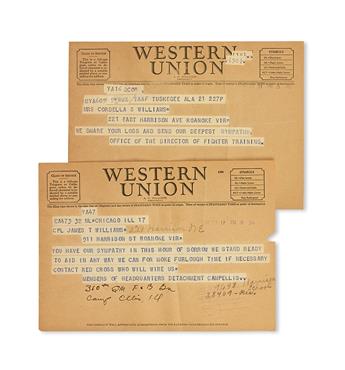Sale 2408 - Lot 380
Price Realized: $ 8,000
Price Realized: $ 10,400
?Final Price Realized includes Buyer’s Premium added to Hammer Price
Estimate: $ 5,000 - $ 7,500
(MILITARY--WORLD WAR TWO.) TUSKEGEE AIRMEN. An extraordinarily rich archive of three Tuskegee Airmen: First Lieutenant Eugene W. Williams, First Lieutenant Leroi S. Williams, and Second Lieutenant James T. Williams; plus material related to the Williams family Over 300 items: photographs, official documents, letters and ephemera. should be seen. Vp, 1943-1949
Additional Details
the finest tuskegee related archive we have ever handled A wonderful time capsule consisting of over 300 items relating to Tuskegee Airmen Lieutenants Leroi S. Williams, Eugene W. Williams and Second Lieutenant James T. Williams and their time as Tuskegee Airmen from 1943 to 1949. Second Lieutenant James T. Williams was not involved as a pilot but organized entertainment for the base. One of his productions at Tuskegee titled "Roger" included some big names from the music world; among them Jimmie Lunceford, and Coleman Hawkins.) There are quite a number of excellent photographs of the planes and their pilots, a few candid ones taken by fellow pilots. Standing out among the photographs is a striking studio portrait of Leroi Williams in his pilot's fleece-lined flight jacket, taken at the noted Prentice Hall Polk Studio, Tuskegee's official photographer. Sadly, Lieutenant Leroi Williams died in a crash here in the states. Included is a presidential certificate, a great many photographs of the pilots with their planes, flying squads, and together with other Airmen. In addition to the photographs, there is a substantial quantity of official Tuskegee and Army Air Force pamphlets and manuals, pilots' log books, along with related official base publications and communications. Among the latter is a rare copy of "The Hawks Cry," the Tuskegee Airfield newsletter, a rather home-made mimeographed piece, printed on highly acidic paper. The Tuskegee graduation programs are similarly printed and quite scarce. Among the letters of condolence and the general Tuskegee memorabilia are numerous clippings, and a rich selection of ephemera from the 66th Army Air Forces and the 332nd Fighter Wing, stationed at various bases. In an early 1943 letter, "Dear Folks at Home," Leroi Williams wrote: "If all goes well, in two months I will be flying a P40 and one has to solo it the first time he rides in it because it carries only one person . . . I have over two hundred hours Flying time in four different classes of ships. If I can get a few hours in a twin engine plane I can get a transport pilots rating after the war. I don't know if I'll ever get a chance to fly a twin engine job, but I'm hoping."
Sadly, as cited above, First Lieutenant Leroi Williams was lost when his plane crashed here in the States. There is a great deal of material surrounding his death; some 36 telegrams, including one from General Benjamin Davis (in charge of the Airmen); and another from the family of the other pilot that went down with Williams. Among the many letters of condolence is a typed letter signed from Brig. General F. O'D. Hunter, and a large hand tinted post-mortem photograph of Williams' casket, draped in the American flag. Tragically the Williams family that answered the call to defend their country by offering up three of its children, were to lose a second Airman, Leroi's brother Eugene. He too was killed, apparently overseas in 1949, when his low-flying plane hit a church steeple and crashed. Unfortunately we were unable to find any more details surrounding his death; but there is a very touching letter to his mother Cordelia Williams, from a couple who knew him, referring to him with his pilot-related knick-name "Flaps." But the archive has a great deal more to offer than just the material surrounding those members of the Williams family that saw military service. Sister Geraldine Edna Williams was a capable pianist and active member of the NAACP, both in high school and later at Howard University; and there are some very touching letters from her to her children written in the 1970's. The archive provides an excellent picture of an exceptional African American family, and how they experienced World War Two.
Sadly, as cited above, First Lieutenant Leroi Williams was lost when his plane crashed here in the States. There is a great deal of material surrounding his death; some 36 telegrams, including one from General Benjamin Davis (in charge of the Airmen); and another from the family of the other pilot that went down with Williams. Among the many letters of condolence is a typed letter signed from Brig. General F. O'D. Hunter, and a large hand tinted post-mortem photograph of Williams' casket, draped in the American flag. Tragically the Williams family that answered the call to defend their country by offering up three of its children, were to lose a second Airman, Leroi's brother Eugene. He too was killed, apparently overseas in 1949, when his low-flying plane hit a church steeple and crashed. Unfortunately we were unable to find any more details surrounding his death; but there is a very touching letter to his mother Cordelia Williams, from a couple who knew him, referring to him with his pilot-related knick-name "Flaps." But the archive has a great deal more to offer than just the material surrounding those members of the Williams family that saw military service. Sister Geraldine Edna Williams was a capable pianist and active member of the NAACP, both in high school and later at Howard University; and there are some very touching letters from her to her children written in the 1970's. The archive provides an excellent picture of an exceptional African American family, and how they experienced World War Two.
Exhibition Hours
Exhibition Hours
Aliquam vulputate ornare congue. Vestibulum maximus, libero in placerat faucibus, risus nisl molestie massa, ut maximus metus lectus vel lorem.





